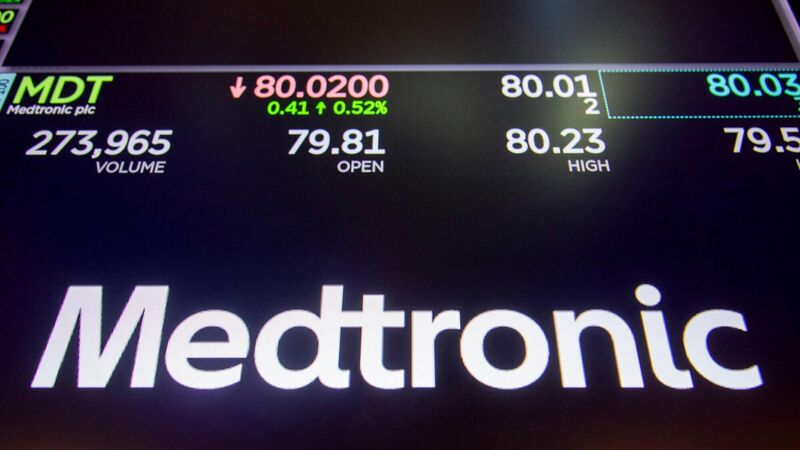John Whelan: Medtech firms operating in Ireland riding the Trump tariff wave

Medtronic delivered its strongest revenue growth in more than a decade, outside the covid pandemic. Picture: Michael Nagle/Bloomberg
Medical devices firm Medtronic’s release of upbeat results for its second quarter last week, underscores how leading medical device makers can thrive even as tariffs bite.
The Ireland headquartered company is riding industry-wide demand for high-tech solutions to chronic health issues.
Medtronic delivered its strongest revenue growth in more than a decade, outside the covid pandemic, driven by an over 9% boost in cardiovascular device sales.
A key component in the exceptional output was from the Irish facility in Galway which is a research and development as well as manufacturing centre for its cardiac and vascular businesses and is also a major producer and exporter of heart stents.
All that good news sent Medtronic shares up 5% last week and now they’re up 26% for the year.
Earlier in the year the company said it expected US president Donald Trump’s tariffs to add $350m (€303.7m) to its gross cost of goods in its current fiscal year, keeping earnings flat.
However, Medtronic has avoided much of the damage by tweaking its supply chain and other manoeuvres, raising its profit forecast for 2026 and substantially lowering the expected tariff hit.
The company now sends products directly from their Irish and other European facilities to the South American markets, avoiding their US distribution centre and US tariffs.
They have also been replacing their over 200 sub-suppliers, many in China, to reduce their tariff exposure.
These manoeuvres to get around the Trump tariffs seem to be working for other medical devices companies also.
Johnson & Johnson and Boston Scientific both halved their tariff costs expectations for this year and Abbott, after telling investors last quarter that they expected a significant tariff impact, lowered their forecast substantially this quarter.
All this has been good news for the Medtech sector in Ireland which has been making serious strides in recent years and is now one of the top five hubs for Medtech in the world.
With more than 300 companies employing an estimated 48,000 people in the sector, Irish companies are currently ranked as one of the biggest employers of medical technology professionals in Europe and last year were ranked the third largest exporter of medical devices from the region.
The health of the Medtech sector is particularly important as small and medium-sized companies (SMEs) make up around 90% of Ireland’s medical technology industry.
Also there is a much better export balance in the sector than with pharmaceuticals as 47% of all Medtech exports from Ireland go to Europe, according to the European Federation of Pharmaceutical Industries and Associations.
Despite these bright spots, executives in Medtech face many challenges in 2026, in particular the continued policy disputes in Europe and its relationships with the US and China, both key partners for efficient and profitable export and import trading.
Further concern for Ireland is the launch in September by the US secretary of commerce of a Section 232 investigation to assess how imports of medical devices impact national security. The department said it would make recommendations within 270 days.
The US administration is also focused on disincentivising a tax planning strategy associated with Ireland that enables companies to take advantage of the country’s lower tax rate by booking operating profits of US-sold products through their Irish subsidiaries.
Closer to home, the EU’s proposed Critical Medicines Act has the potential to further disrupt the sector, particularly the idea of prioritising EU-made medicines and medical devices.
While this narrative is understandable, as a counter measure to the US administration’s drive to ‘make in America first’, it overlooks the realities of how medical devices are manufactured and supplied today.
Introducing local-content requirements or preferential treatment for EU-made products would disrupt the extensive and necessary networks, fragment supply chains and drive-up costs, with limited evidence that such measures would enhance European resilience.
Local-content requirements could also affect Ireland’s trade relationships with the US and weaken its industrial base in the long term, undermining the competitiveness of both Irish and international companies operating in Ireland.











